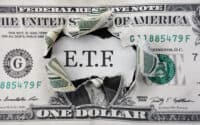 For the first time in more than a month, WTI crude oil has touched the $100/barrel mark after falling below $91/barrel in mid-June. The move is likely the result of yesterday’s IEA report that inventories had fallen by 3.7 million barrels. Does this indicate a move back toward $90/barrel or up toward $110/barrel?
For the first time in more than a month, WTI crude oil has touched the $100/barrel mark after falling below $91/barrel in mid-June. The move is likely the result of yesterday’s IEA report that inventories had fallen by 3.7 million barrels. Does this indicate a move back toward $90/barrel or up toward $110/barrel?
The drop to near $90/barrel followed the IEA’s announcement of a 60 million barrel release from the strategic petroleum reserves of it member countries, including a 30 million barrel release from the US Strategic Petroleum Reserve. Ostensibly a reaction to the loss of Libyan production and an attempt to inject some elasticity of supply back into the market, the release was widely seen as an attempt to lower pump prices for consumers.
That worked for a while, but lacking any further word from the IEA on additional releases, the market has interpreted last month’s action as a one-off with little likelihood of a repeat.
There are also reports out of Europe today that the Eurozone nations have agreed on a deal that would allow Greece to default temporarily on its loans prior to a bond buyback by the European Central Bank. This may not be the best solution for Greece, but it signals that the rest of the Eurozone may be able to avoid the contagion threat that has plagued the continent for months.
Also Read: Demand For Crude Oil To Rise Again in 2012
Another factor that could be having an effect is the continuing debate over raising the US debt ceiling. While the general thinking up to this point is that a US default would never happen, lack of progress in the discussions is beginning to have an impact. If the US should default, oil, which is priced in dollars, is very likely to jump as the dollar will tumble in currency markets.
The physical fact that demand growth is likely to outstrip supply growth also figures in. This has no immediate effect on the market price, but it remains in the background and moves prices inexorably upward.
Every one of these factors leads to a conclusion that oil could well continue its march toward $110/barrel, a price last seen in early May. And there are precious few things standing in the way of that march.
If the IEA should announce another release from strategic reserves, crude prices will likely take another (temporary) dive. But, as they say, if something can’t go on forever, it won’t. And releases from strategic reserves can’t, and won’t, go on even for a few months.
Another factor is the slow pace of growth in the developed economies, and the somewhat slower pace in emerging nations. Demand for energy grows with economic growth, and the lack of strong growth could suppress oil prices a little.
The other major thing that could hold down crude prices would be a significant drop in demand from China. Today’s report that PMI in China fell below 50 could indicate that the country’s economy is slowing and that demand for crude will fall. But one month does not make a trend, and unless other signals manifest themselves for several months in a row of a significant slowing in China’s economy there’s no reason to believe that the Chinese thirst for oil will abate.
On balance, it seems far more likely that oil will head to $110/barrel than it will fall toward $90/barrel again.
Paul Ausick
Take This Retirement Quiz To Get Matched With An Advisor Now (Sponsored)
Are you ready for retirement? Planning for retirement can be overwhelming, that’s why it could be a good idea to speak to a fiduciary financial advisor about your goals today.
Start by taking this retirement quiz right here from SmartAsset that will match you with up to 3 financial advisors that serve your area and beyond in 5 minutes. Smart Asset is now matching over 50,000 people a month.
Click here now to get started.
Thank you for reading! Have some feedback for us?
Contact the 24/7 Wall St. editorial team.



